
In summer 2016 our travel expert Irina Milintsova has successfully climbed the southern side of Elbrus. Since then Irina organizes trips to Elbrus for our clients. If you are still not sure whether mountain climbing is for you, read this article to see what to expect from the trip.
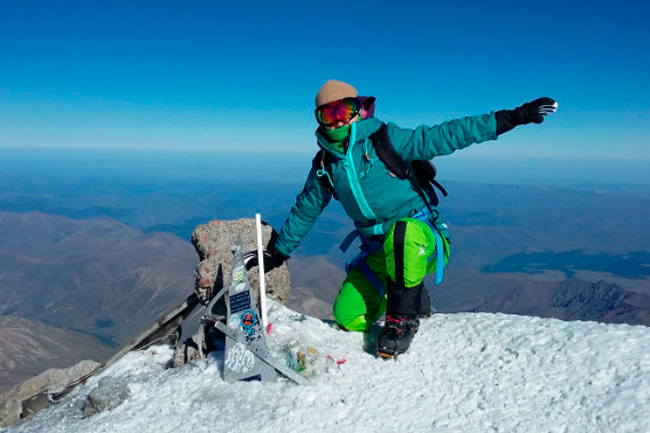
“I really love mountains, but I’ve never thought of actualy climbing before. I’ve learned a lot about Elbrus from my colleague, who had a dream of climbing it and eventually made it come true. Three times she traveled to Elbrus, but two times in a row the weather was too bad to continue the ascension. As alpinists say, “Elbrus did not let her further”. Her third attempt, however, was a success and she managed to get to the top.
I shared the story of her success with the friend I usually travel with and she loved it so much that we decided that on our next vacation we would climb Everest – the highest summit in Russia. First, I was skeptical about the idea; I questioned whether it was safe, whether I was fit enough to try this; I did not know how to prepare myself for the ascension and what kind of equipment to buy. However, the thought of being on top of the mountain really excited me and it was too late to give up on this idea.
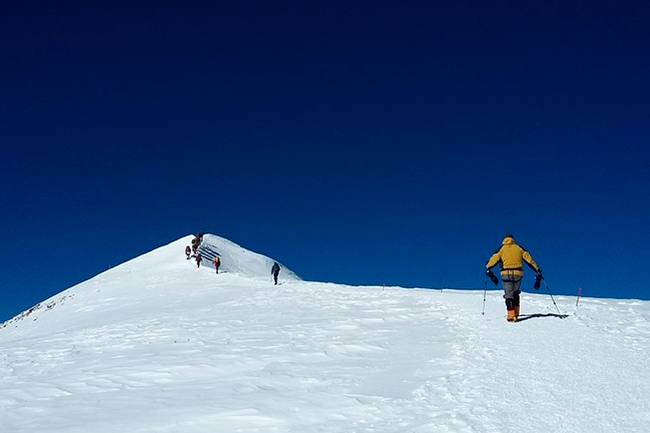
Every year climbing the southern side of Elbrus is becoming more popular, because you don't have to be a climber or an athlete to manage this track. It doesn't mean, however, that you can treat the climbing carelessly or go without preparation. Climbing the mountain is a test - both physical and psychological .
Before going to Elbrus, I highly recommend you trying trekking in the mountains to estimate the intensity, your level of physical preparation and to decide whether you need this challenge at all. You should also try to be more active throughout the day: go to the gym, jog, ride a bike or swim. In order to prepare myself for the summit, I had to start running. With the help of daily exercises my endurance levels increased and it definitely helped me while climbing. On top of that, I have always been a sporty person and that also helped a lot. Be sure to run at least two times a week for two or three months before the trip, so you would increase your chances of making it to the top. When you get to Elbrus, you will thank yourself for not being lazy and doing a good job.
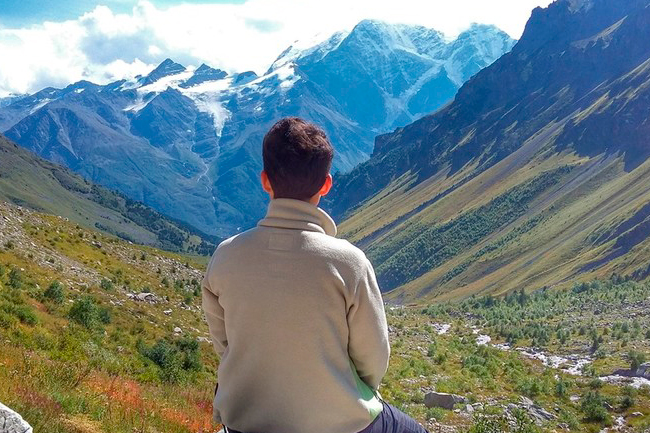
Another thing that contributes to a successful climbing is the professionalism of the guide instructors. It is important that they are experienced climbers, and that there are two of them for a group of 5-8 people. Our program is designed for a gradual ascension with one rest day, which allows the body to adapt to high altitudes. The faster you acclimatize, the better you will feel throughout the whole journey, and this is the key to a successful ascension.
During the period of acclimatization your guides will teach you all the necessary skills like putting on your climbing gear and piton belays, using an ice axe, tying up crampons correctly, walking together in a rope team, feeling and following the rhythm of the group. Speaking about crampons, you will have to learn to tie them up yourself in 15 seconds, because while climbing the mountain you have to count only on yourself. You should also choose your clothes properly. To make sure you understand what type of clothes you will need, take a look at our program description. Many things from that list can be also used on other trips as well. In case you don’t want to buy it, all the necessary equipment is able for rent, which can be done in the beginning of the trip.
For the first four days you will go on acclimatization routes enjoying charming views of the mountains and nature. Even the local dogs are real connoisseurs of the beauty around them :)
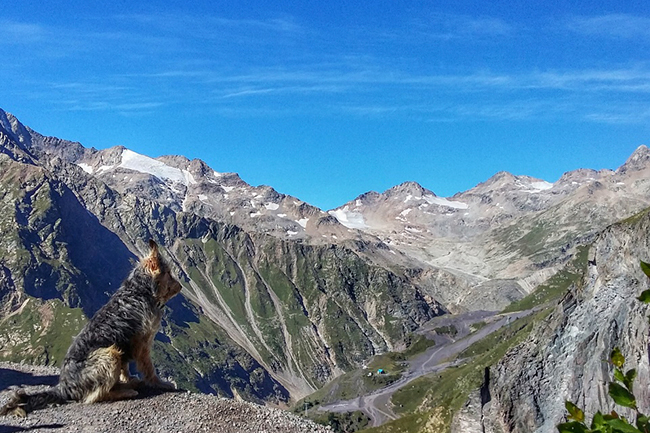
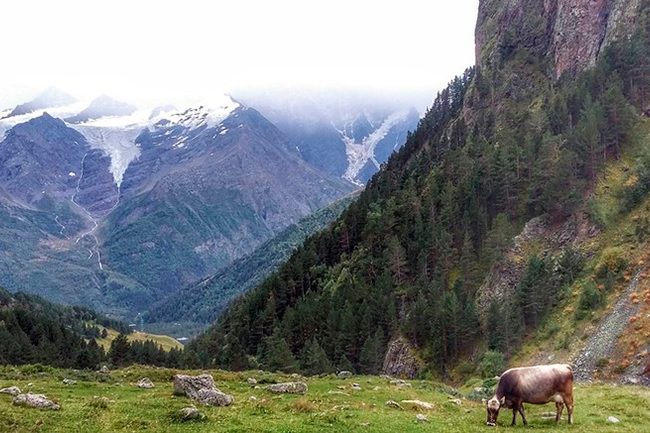
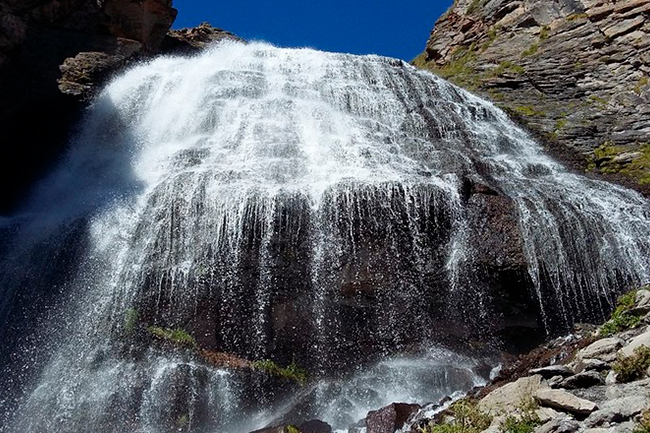
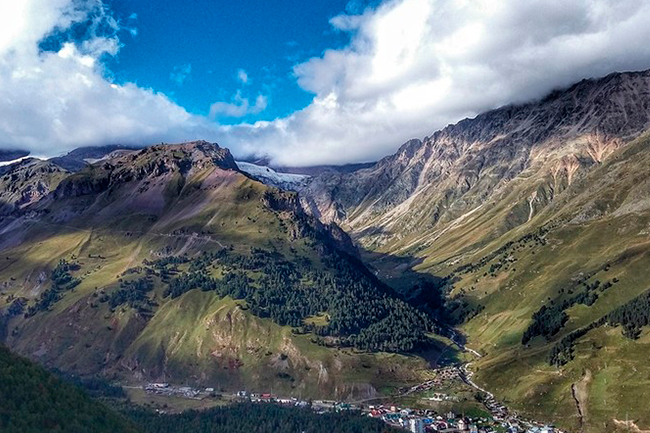
You will see mountain rivers, the waterfall “Devichyie kosy” (which translates from Russian as Maiden’s braids), the observatory of the Russian Academy of Sciences, Mount Cheget and Caucasian mountains.
All the way you will be gazing at the top of the mighty Elbrus, for which you have made all the way.
Day 5 is a rest day. After which, if the weather allows, you and your team will start trekking to the peak at night before the sunrise . It is important to have some sleep before that, even though it gets harder at the higher altitudes. Lack of oxygen knocks down centers in the brain that are responsible for sleeping and it provokes constant awakenings. It is also necessary to eat well and stock up on carbohydrates before moving on even if you do not feel hungry. Having bad appetite is normal under these conditions, even if you have no signs of altitude sickness.
Each of team members gets sweet tea and a chocolate bar to keep everyone warm and cheerful during stops. Headache pills are a must as the headache is, unfortunately, inevitable. The instructor checks everyone’s equipment, gives some recommendations on what clothes to put on. Finally, you put on your crampons and here is your H-hour, the moment you had been waiting for and which at the same time made you nervous - it’s time to go!
Throughout the route you should focus on your breath and the overall pace of the group as you all walk pari passu. It is forbidden to deviate from the route, because there is a chance of falling or stepping on a crack or fumarole hidden under the snow.
We’ve made a few short stops to rest before sunrise and I’ve realized how cold it was and my hands and feet started to freeze instantly. Even warm gloves, thermal socks and mountaineering boots are not able to keep you entirely from cold. In summer, the temperature at the top of Mount Elbrus can drop to -30°C (-22 F), and in winter it can drop below -40°C (-40 F). On the other hand, during those stops you have time to look at the night sky and see the stars which are closer to you now.
When we’ve reached the col, we made a long anticipated stop to drink tea with the chocolate. We had to take off our gloves to get the snacks from the backpacks. My hands, I have to say, did not really appreciate that, as it was freezing cold! As we moved on, we soon saw the sunrise at an altitude of 5,400 meters (17716.54 ft.)
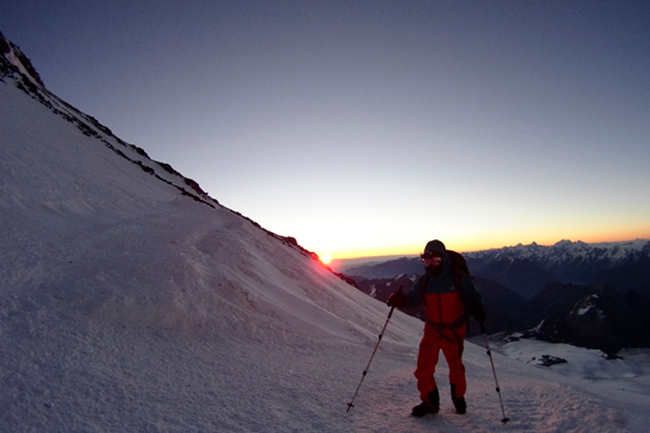
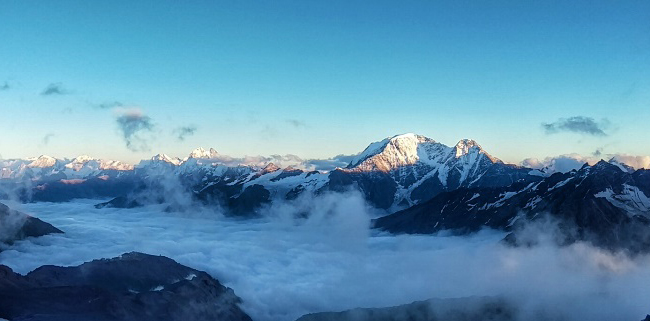
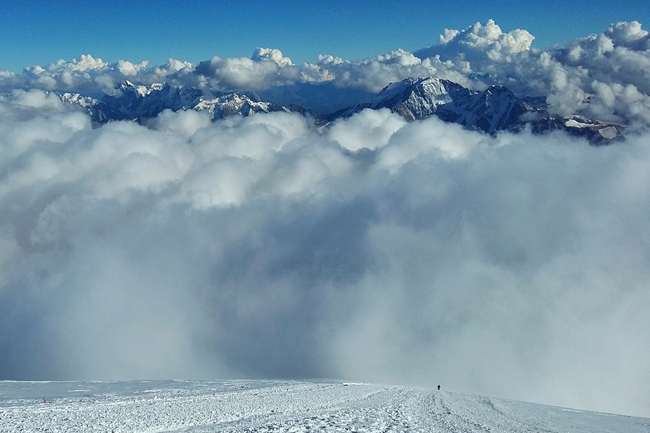
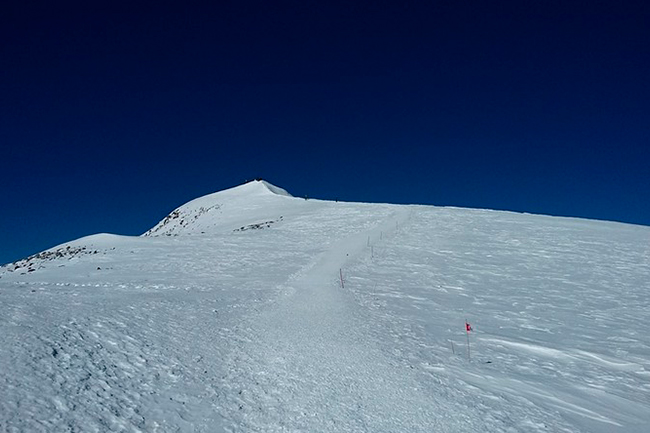
Before that, we’ve been walking in total darkness and had no idea what a stunning view was around! Be sure to take an action camera or a phone with you so you will be able to make some amazing shots.
We’ve climbed a steep rise and expected to see a long awaited summit…but it was not yet it. A long plateau followed, and despite the slope is not sharp, walking is not that easy. I felt like I was walking on the moon, slow and hard.
Finally, you need to overcome only few more meters ascent and that’s it – tears of happiness! You are on 5642 meters mark! It feels absolutely incredible!
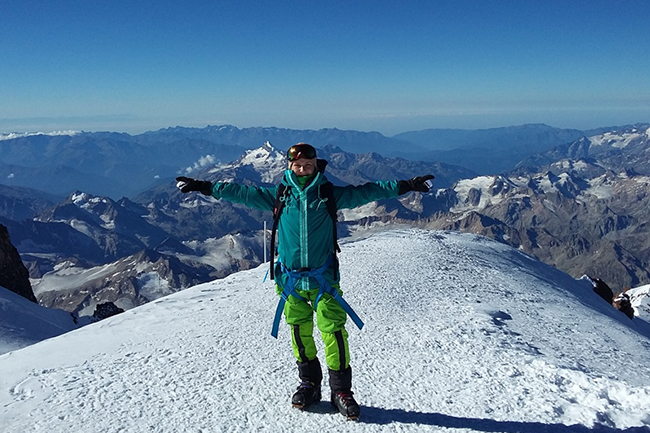
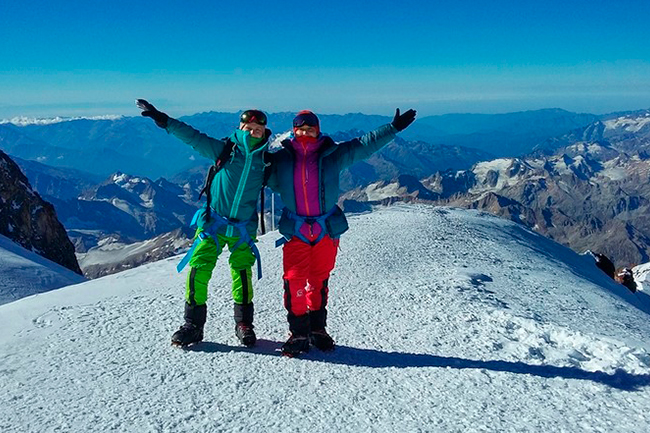
In total, it takes 8 to 10 hours to climb to the top of Elbrus. The most fascinating thing is that you are so disconnected from reality that time ceases to exist. On the top of the mountain everyone is happy people hug and congratulate each other. However, it is not yet the ending of the journey, as you still have to get back. It is only after safe return when climbers receive final congratulations.
After enjoying the top of Elbrus and taking photo shots, you gather the remaining strength and head back to the basecamp. It is better to start the descent as early as possible, because after noon the weather in the mountains changes rapidly. The road back seemed to me more exhausting than the way up, because most of the effort had been already made. Statistics shows, that most accidents happen during the descent, that it is why if you are not feeling well you should tell your instructor right away.
When you get back to the basecamp, it is hard to believe what you had gone through just a few hours ago. Looking back at the top, I said to myself, "Elbrus, thank you for allowing me to do that."
If after this story you are inspired and determined to put your name on the list of people who has made it to the top of Elbrus, we will be happy to help you with organizing the one of the most memorable experiences in your life".